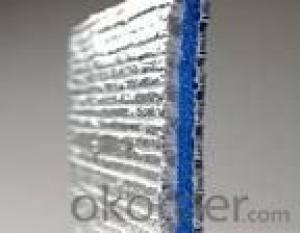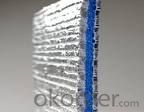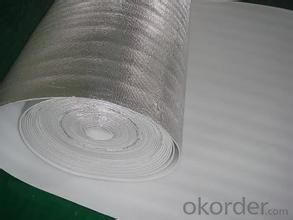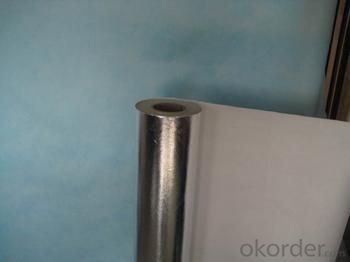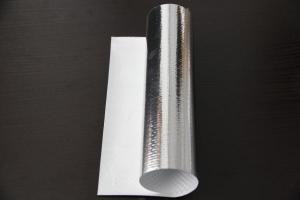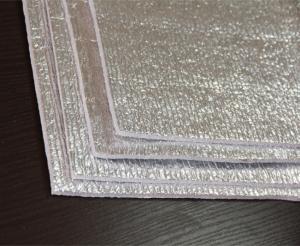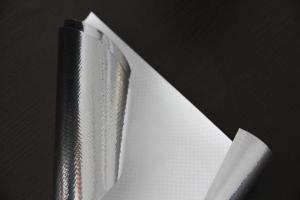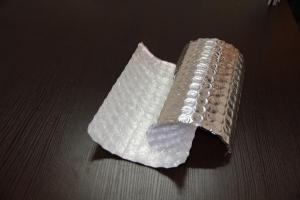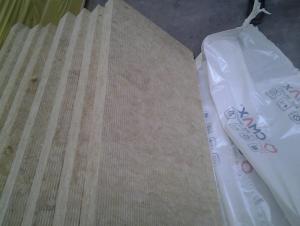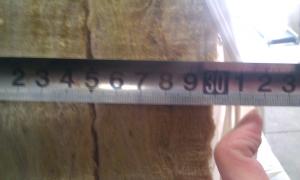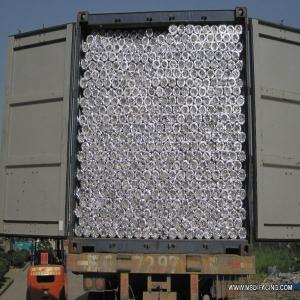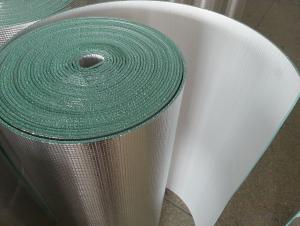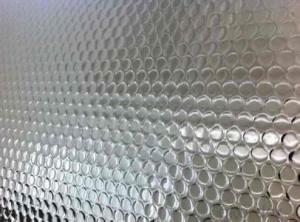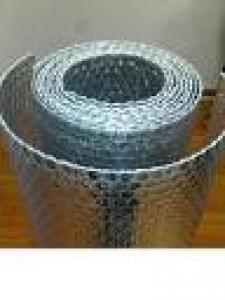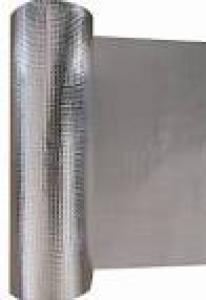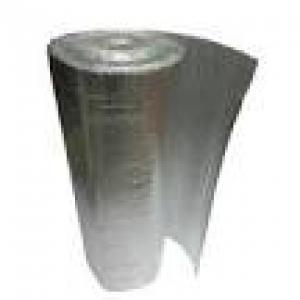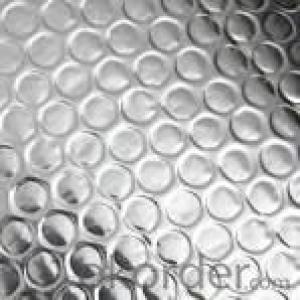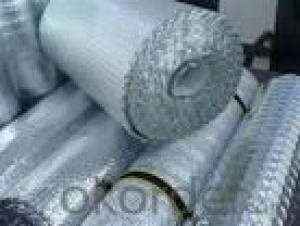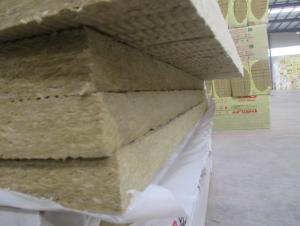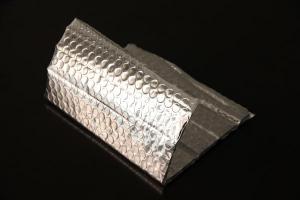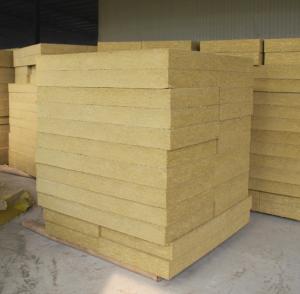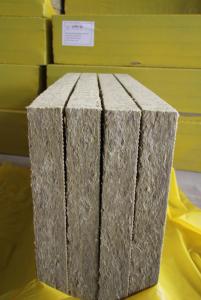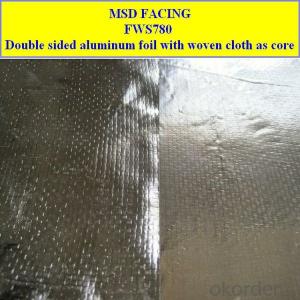Torch Down Roofing Insulation - Aluminum Foil Coated Bubble Type 10
- Loading Port:
- Shanghai
- Payment Terms:
- TT OR LC
- Min Order Qty:
- 10000 m²
- Supply Capability:
- 100000 m²/month
OKorder Service Pledge
OKorder Financial Service
You Might Also Like
Bubble Insulation Benefits:
Reflects 96% of radiant heat
Non-toxic / Non-carcinogenic
Does not require protective clothing or respirators to install
Durable and lightweight
Does not compress, collapse or disintegrate
Vapor and radon retarder
Easy to cut and install
Permanent and maintenance-free
Does not provide a growth medium or nutritive value for fungus, insects, or rodents
Does not support the growth of mold or mildew
Not affected by moisture or humidity
Lowers heating and cooling costs year round
Bubble Foil Application:
Metal & Steel Buildings
Homes
Roof Underlayments
Cathedral Ceilings
Crawl Spaces
Hot Water Heaters
Basement Walls
Floors
Garage Doors
Concrete slabs
Driveway snow melts
Pole barns
Post frame buildings
Poultry barns
Animal kennels
Temperature sensitive storage areas
Air Bubble Foil Insulation Tech Data:
Material Structure: AL/Bubble/AL | ||
Bubble Size:D10mm*H 4mm(10*2.5/10*4/10*6/20*7/25*10)choose the bubble size | ||
Bubble Weight:0.13kg/m2 ( can be customized ) | ||
Roll Width:1.2m (lenth can be customized) | ||
PROPERTIES | TEST DATA | UNIT |
Thickness | 3.5-4 | mm |
Weight | 250 | g/m2 |
Emissivity | 0.03-0.04 | COEF |
Thermal conductivity | 0.034 | w/m0 |
Apparent Density | 85 | kg/m3 |
Reflectivity | 95-96 | % |
Water Vapour Transmission | 0.013 | g/m2kpa |
Corrosion | doesn't generate | |
Tensile Strength(MD) | 16.98 | Mpa |
Tensile Strength(TD) | 16.5 | Mpa |
- Q: As opposed to other roof structures, such as Mansard or Hipped roofs. If so, is it because there is a lesser distance between the internal heat source and the roof?
- No, it really does not matter what type of roof as long as the insulation is well done. But of course in a flat roof it is easier to reach all the points with ease whereas in sloping roof some areas may be inaccessible. But, with blow-in insulation that is not a big problem.
- Q: i mean, what do you use to make it stay put? glue? nails?
- Steel spreaders may be cheapest (as described in other answer) but many roofs have shingle nails sticking out,a couple dabs of caulking,glue,you're done! Be sure anything you use is compatible with your foam,some will just MELT it. Good Luck! DrJ
- Q: I do not have extra space on the roof. Roof also tapers to drains at one end of building.
- the R values, i am not sure. that white stuff is NOT Styrofoam. it is a cheap imitation. Real Styrofoam is made by DuPont, is usually a light blue, with a plastic seal coat on both sides. that thin plastic seal coat doubles the R value. what really does the insulation, is trapped air. air is actually a poor conductor of heat. the foam is actually little bubbles of air. dead air that is, air that cannot circulate and move. it works similarly to the way a down vest or coat works, it fluffs up and holds the air pockets out within a confining structure, thus retaining heat. the rigid stuff will last much longer, i can tell you that much. the white foam stuff deteriorates quickly. buy cheap, get cheap, is the general rule. you may wind up only having to do it again in a few years.
- Q: this room has an aluminum roof and hardwood siding. All the heat hit the aluminum roof
- CUT ACCESS HOLE I/S HOUSE BLOW FOAM, IF YOUR LAST NAME BILL GATES! TRY FIBERGLASS BLOW DYI @ HOME DEPOT OR ROCK WOOL EVEN CHEAPER VENTILATE THAT ROOF - SOFFIT - TO LET AIR IN ROOF, RIDGE, AIR HAWK, WHIRLI-BIRD, POWER FAN ( SOLAR ), GABLE VENT - TO LET IT OUT!!!!
- Q: does insulation, with a high R value, in the attic prolong the life of the shingles on the roof.
- I partially disagree with the previous answers. Ventilation does help tremendously BUT in the winter a high R value keeps the heat from going through the ceiling through the attic to the roof heating up any snow on the roof which causes ice & ice dams to form, which in turn will shorten the life span of your roof.
- Q: We have recently moved into a house in Australia with a tin roof. There is a layer of 5cm batts on the rafters in the roof space, but the temp is 10-15 degrees C higher up there than in the house (with all the windows and doors open). I don't want to get air-conditioning, is there another way to insulate the roof and cool the house?
- put insulation above the ceiling (not on the rafters) and add vents on each side of the attic....
- Q: Hello, this is quite an ordeal I've got. I am renting a cabin that has galvanized metal sheets as roofing. These are of course nailed into large wooden beans that run all acrooss.The owner and I made a deal, that deal is that I will put up insulation on the roof. However, she wants to put (i don't knw what they are called) big rectangular styrofam blocks (about 3x9 feet long). She wants me to cut them up to a width where they will feet in between the wooden beams and somehow secure them on. My idea of securing them is by nailing a plastic covering over them. but I am unsure about how to do the rest. How will i get the blocks to stay put if i cannot nail them? is there a better and CHEAP way to do it?As of now, if you look up you see the wooden beams and the tin metal roof. She wants it to be insulated and not visible.
- Visit your local Lowes, Ace, or Home Depot. Buy a caulking gun and a few tubes of industrial grade adhesive from their large selection. Read the label and choose an adhesive that mentions both plastic and metal. (If I were doing it, I would try some silicon on the Styrofoam and if it doesn't melt, use silicon, but there are dozens of different adhesives on the shelves.) Once you have the right adhesive, cut the foam to fit snugly between the roof members, and stick them up. To cover the Styrofoam, use any lightweight material you can find. I would try to find wall paper that simulates barn-board. (I have seen it somewhere.) Just apply a coat of wallpaper sizing to the Styrofoam first to give the wallpaper glue something to stick to. Most wallpapers already have the glue on the back; you just run it thru water to wet it. I use a large paint roller tray with a piece of stiff wire across it. Then I drop my cut to length strip of paper in the deep end of the tray and pull it thru under the wire. Have fun. Honey
- Q: Are black concrete roof tiles for my house uncomfortably hot even with roof under sheeting and insulation?
- Black absorbs the suns rays. You're going to have to put vented windows in the attic. One on one side and one on the other side for ventilation if you don't already have them. There are also attic fans...take your choice. Purchase a fan that serves your purpose. As for the venting on the roof I still think it's a good idea for more ventilation.
- Q: House is a bi-level. Recently added storm windows to deck off dining room. Having a new rubber roof installed would like to know if we can insulate ceiling to make the room warmer. What product do you suggest we use. we are getting conflicting answers, some say you can insulate others say the ceiling needs to breath having a rubber roof install. Please advise.
- Yes, you can. There is a little plastic piece that you will want to tack to the underside of the roof though before you install your insulation. It is a plastic air vent that keeps about an inch or so of space between the roof and the insulation so that air can move through. You need to do that so the roof can breathe as they say. If you don't allow it to breathe, the difference in temperature from outside to inside will cause the roof to sweat and will make your roof go bad a lot quicker.
- Q: What is the difference between roof and loft insulations?
- Potentially that the roof itself is insulated on the underside. A loft insulation could be that the base or floor of the loft/ attic is insulated. Otherwise, I'm not sure.
Send your message to us
Torch Down Roofing Insulation - Aluminum Foil Coated Bubble Type 10
- Loading Port:
- Shanghai
- Payment Terms:
- TT OR LC
- Min Order Qty:
- 10000 m²
- Supply Capability:
- 100000 m²/month
OKorder Service Pledge
OKorder Financial Service
Similar products
Hot products
Hot Searches
Related keywords
